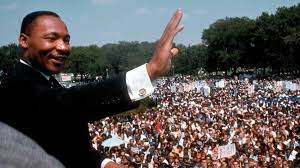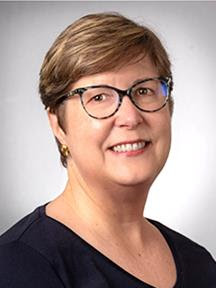
I was seven years old and living in Baltimore, Maryland, when I first learned who Martin Luther King Jr. was. On April 5, 1968, the day after Dr. King’s assassination in Memphis, Tennessee, I heard the news announcer proclaim his death on the radio that my mother listened to every morning as we got ready for school. The word assassinated caught my attention because the only other time I heard it used was in reference to President John F. Kennedy. I asked my mother what happened and she explained to me that Dr. King was a minister who wanted all people to get along and be treated equally, especially black and white people, and that someone killed him for acting on his beliefs. A day later my father, a Major in the Maryland National Guard, was called to active duty because of rioting in Baltimore.
This was my introduction to civil rights. At the time I attended Baltimore public school #233, Roland Park, where my 2nd and 3rd grade teachers were African American. Baltimore schools desegregated in the mid-1950’s after the U.S. Supreme Court’s 1954 ruling against segregated education in Brown v. Board of Education, and it never occurred to me from kindergarten forward that I wouldn’t be friends with and respect black people, especially when important authority figures in my life were African American.
Flash forward ahead to January 1986. I was living in Williamsburg, Virginia, while I pursued my PhD in early American history at the College of William and Mary. Martin Luther King’s birthday became a federal holiday in 1983 but the Commonwealth of Virginia didn’t recognize it; instead Virginians observed Lee-Jackson-King day, adding the Confederate Generals (and sons of Virginia) Robert E. Lee and Stonewall Jackson’s birthday to the holiday. When I read this in the local newspaper I had a visceral reaction to it–how could anyone think it was appropriate to commemorate the leader of the civil rights movement with two men who fought to preserve slavery? This moment, along with my more in-depth understanding of change over time from graduate school, led me to understand that the civil rights movement was far from over and that Americans still needed to be educated about the diverse groups that make up our pluralistic society. But what could I do about it?
Although I didn’t know it at the time, educating people about civil rights and social justice became my mission as a public historian. It’s important to remember that the leaders of the civil rights movement such as Dr. King, Rosa Parks, John Lewis and the Little Rock Nine were themselves products of segregated education and while schools for black students were not equal to those of white students in terms of budgets, facilities, and supplies, many black educators were better educated than white teachers. Segregated schools such as Paul Lawrence Dunbar High School in Little Rock featured faculty with master’s degrees and doctorates who provided a nurturing environment and held high expectations for their students. Similar to UA Little Rock’s beginning as a junior college inside of Central High School, the faculty at Dunbar organized a junior college that operated until the high school closed.
In my first large public history project at UA Little Rock I worked with accomplished alumni of Dunbar to elevate the history of the school through a traveling exhibit, an archive, and an oral history project. As a newly minted Assistant Professor I was lucky to be mentored by educators with far more life experience than me, and to become friends with a Tuskegee Airman and a player in the Negro Baseball League. The success of the Dunbar project also provided my foray into working on the 40th Anniversary of the Central High Desegregation Crisis and creating the Central High Museum and Visitor Center in the restored Mobil/Magnolia service station at the corner of Park Street and Daisy Bates Drive. A decade later I helped create the exhibits in the Little Rock Central High National Historic site across the street from the old service station.
Dr. Martin Luther King, Jr. did not just lead the Civil Rights Movement in the United States, he became an inspiration for me and many others to turn his words and dreams into action. King set an example for the Little Rock Nine to follow, and witnessed the fruits of his labors when Ernest Green graduated from Central High School in Spring 1958. In today’s polarized society, we would do well to remember King’s words that “Forgiveness is not an occasional act. It is a permanent attitude.”

Dr. Johanna Millier-Lewis, Associate Dean for Curriculum and Student Success; Interim Chair, World Languages
More about Dr. Martin Luther King Jr. Day
Dr. Martin Luther King Jr. Day is a federal holiday that was signed into law in November of 1983. It is the only federal holiday that coincides with a national day of service to encourage all Americans to volunteer and improve their communities.